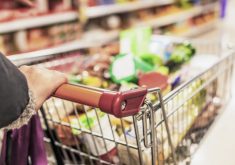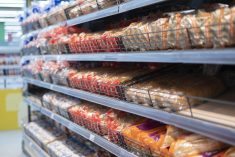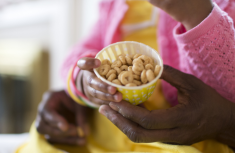Paris | Reuters — Global food commodity prices edged higher in June, supported by higher meat, vegetable oil and dairy prices, the United Nations’ Food and Agriculture Organization said on Friday.
The FAO Food Price Index, which tracks monthly changes in a basket of internationally traded food commodities, averaged 128.0 points in June, up 0.5 per cent from May. The index stood 5.8 per cent higher than a year ago, but remained 20.1 per cent below its record high in March 2022.
Cereals mixed, vegetable oils up
The cereal price index fell 1.5 per cent to 107.4 points, now 6.8 per cent below a year ago, as global maize prices dropped sharply for a second month. Larger harvests and more export competition from Argentina and Brazil weighed on maize, while barley and sorghum also declined.
Read Also

Canada agriculture minister says canola trade prospects are improving after China visit
Canada’s agriculture minister Heath MacDonald said in an interview on Monday his weeklong trip to China is evidence of bilateral relations beginning to thaw, something desperately needed by Canada’s farmers and canola exporters.
Wheat prices, however, rose due to weather concerns in Russia, the European Union, and the United States.
The vegetable oil price index rose 2.3 per cent from May to 155.7 points, now 18.2 per cent above its June 2024 level, led by higher palm, rapeseed, and soy oil prices.
Palm oil climbed nearly five per cent from May on strong import demand, while soy oil was supported by expectations of higher demand from the biofuel sector following announcements of supportive policy measures in Brazil and the United States.
Sugar prices dropped 5.2 per cent from May to 103.7 points, the lowest since April 2021, reflecting improved supply prospects in Brazil, India, and Thailand.
Meat prices rise
Meat prices rose to a record 126.0 points, now 6.7 per cent above June 2024, with all categories rising except poultry. Beef set a new peak, reflecting tighter supplies from Brazil and strong demand from the United States. Poultry prices continued to fall due to abundant Brazilian supplies.
The dairy price index edged up 0.5 per cent from May to 154.4 points, marking a 20.7 per cent annual increase.
In a separate report, the FAO forecast global cereal production in 2025 at a record 2.925 billion tonnes, 0.5 per cent above its previous projection and 2.3 per cent above the previous year.
The outlook could be affected by expected hot, dry conditions in parts of the Northern Hemisphere, particularly for maize with plantings almost complete.














